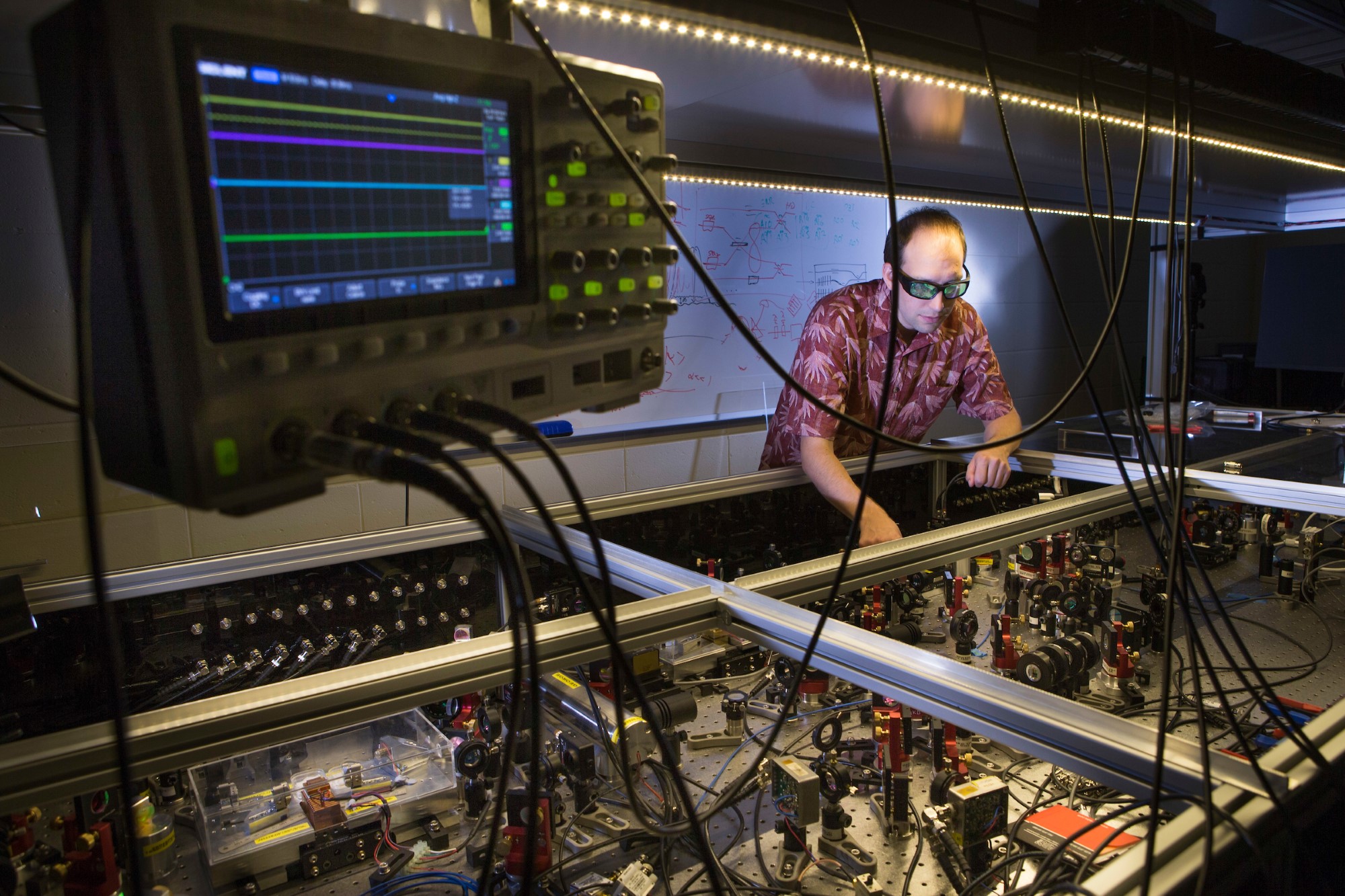
Research projects
Discover the forefront of astronomy and astrophysics through our projects, ranging from deep-space communication systems to groundbreaking adaptive optics. Explore our diverse, ongoing research initiatives shaping the future of space science.
Displaying 1 - 15 of 16 project(s).
In each project, students will utilise data from some of the world’s most powerful radio telescopes, including ASKAP, Parkes, and the Jansky VLA to study the magnetised gas in and around the radio lobes inflated by supermassive black holes.
Theme
- Black hole phenomena
- Structure and evolution of the Cosmos
Student intake
Open for Bachelor, Honours, PhD students
Observatory
People
- Dr Craig Anderson, Supervisor
Data archives
Theme
- Black hole phenomena
- Galactic archaeology
- Instrumentation
- Stellar and planetary astronomy
- Structure and evolution of the Cosmos
Using both the Wide-Field Spectrograph (WiFeS) on the ANU 2.3m telescope and the 1.4 GHz radio band on the Australia Telescope Compact Array (ATCA), the student will address how the radio jets from the supermassive black hole interact with the Seyfert host galaxy to affect the evolution of the galaxy.
Theme
- Black hole phenomena
- Structure and evolution of the Cosmos
With this project we will be using the newly automated ANU 2.3m telescope and the powerful WiFeS optical spectrograph to perform a time-series measurement of luminous active galaxies (AGN) using the technique of Quasar Reverberation Mapping.
Theme
- Black hole phenomena
- Instrumentation
- Structure and evolution of the Cosmos
This honours research developed numerical models of the inner radio structure of Centaurus A using the FLASH relativistic hydrodynamics code, and compared the predictions with observations of the galaxy.
Theme
- Black hole phenomena
Using ANU's SkyMapper Telescope we follow up on gravitational-wave events from LIGO/Virgo to characterise the ejecta from neutron-star collisions.
Theme
- Black hole phenomena
Using ANU's SkyMapper Telescope we follow up on gravitational-wave events from LIGO/Virgo to characterise the ejecta from neutron-star collisions.
Theme
- Black hole phenomena
In this project we will be able to investigate the environmental effect on star formation and galaxy evolution in individual galaxies falling into the cluster through radio observations of active galactic nuclei (AGN).
Theme
- Black hole phenomena
- Structure and evolution of the Cosmos
The main aim of this project is to parallelise an existing Fortran program to take advantage of the parallel processing environment of the supercomputer raijin, located on the ANU campus.
Theme
- Black hole phenomena
- Structure and evolution of the Cosmos
This research project employed the Wide-Field Spectrograph (WiFeS) to study the extended filaments surrounding a sample of brightest cluster galaxies (BCGs) in massive clusters. Integral-field spectroscopy provides the opportunity to measure the distribution, emission properties, and velocities of the emitting gas across the extent of the galaxies.
Theme
- Black hole phenomena
- Structure and evolution of the Cosmos
Supermassive black holes in the early Universe are more massive than we can presently explain. We aim to construct their demographics and reveal their origin.
Theme
- Black hole phenomena
- Structure and evolution of the Cosmos
Student intake
Open for Honours, PhD students
Observatory
People
- Associate Professor Christian Wolf, Supervisor
In this project you will use a new cosmic ray propagation code, CRIPTIC, to model the injection, transport, and final annihilation of positrons in the interstellar medium of the inner Galaxy.
Theme
- Black hole phenomena
- Galactic archaeology
- Structure and evolution of the Cosmos
Student intake
Open for Honours, PhD students
People
- Dr Roland Crocker, Supervisor
- Professor Mark Krumholz, Supervisor
In this project you will use a new cosmic ray propagation code, CRIPTIC, to model the injection, transport, and final annihilation of positrons in the interstellar medium of the inner Galaxy.
Theme
- Black hole phenomena
- Galactic archaeology
- Structure and evolution of the Cosmos
Student intake
Open for Honours, PhD students
People
- Dr Roland Crocker, Supervisor
- Professor Mark Krumholz, Supervisor
We aim to build a novel framework to study supermassive black holes via their unique gravitational wave signatures providing a multi-messenger tool to constrain galaxy formation in the early universe.
Theme
- Black hole phenomena
- Structure and evolution of the Cosmos
In this project you will use some combination of theoretical population synthesis calculations and/or analysis of public data from the Fermi telescope to examine the question: what is the real origin of the Galactic Centre Gamma-Ray Excess?
Theme
- Black hole phenomena
- Galactic archaeology
- Structure and evolution of the Cosmos
Student intake
Open for Honours, PhD students
People
- Dr Roland Crocker, Supervisor
- Professor Mark Krumholz, Supervisor
